A few of us took advantage of the nice weather on Saturday to conduct this year’s long-delayed Geezer TARC flyoff at Pegasus field. It was the usual cast of characters – Doug, Duane, Vince and me, along with a few spectators. People began arriving at the field around 9:30; within half an hour the range was set up and ready to go.
First off the pad was HARA President Doug Aguilar, flying his scratch built rocket with the Pringle’s can payload section. He chose an Estes E16-8 motor for his initial flight, which did not quite have the impulse needed to reach the 850 foot goal. The rocket only made it to 496 feet, and the 8 second delay – which would have been great if the rocket had made it to the goal – was too long, ejecting the parachutes when the rocket was speeding towards the ground. The parachute ripped away from the payload section, resulting in a disqualification. Fortunately, nothing was broken and the rocket was readied for its next flight.
The second flight was made by NAR advisor Vince Huegele, who had Frankensteined together a rocket from pieces of various kits – a tradition for him. His model featured the plastic egg capsule from an Estes Scrambler, connected to a 2 piece BT-56 body tube and 3 trapezoid fins scrounged from another kit. It was also the only rocket to use launch lugs. The lightest of the rockets flown at the launch, this classic-looking egglofter was powered by a single Estes E12-6 motor.
Upon ignition, Vince’s rocket left off the pad, soaring past the mark to 943 feet. Naturally, the rocket took a long time to descend to the ground, with the egg capsule touching down 77 seconds after launch, well outside the 42-45 second TARC duration window. Realizing he needed to add weight to the rocket, Vince spent quite a few minutes looking for a suitably sized rock he could use as ballast for his second flight.
The reigning TARC Geezer, HARA Treasurer Duane Mayer, was next. His rocket was a simple 3 fin BT-70 based model, using an Aerotech E18-7 reload for the motor. Duane’s years of experience showed as his rocket reached apogee at 865 feet, only 15 feet above the mark, and was slightly short on duration at 38 seconds, 4 seconds outside the window.This put him in the lead, but it was clear that the ejection charge fired late, causing the model to fall from apogee more than was comfortable.
My flight was the last in the first round. My rocket, Oeuf, was a simple model using Semroc ST-18 body tubes (the smallest diameter that can accommodate a “regulation” TARC egg) and upscaled Alpha fins. I designed her to be versatile, so the motor mount was a four engine cluster, capable of handling 2 or 4 18mm motors. For this flight I decided to keep the “pucker factor” associated with cluster launches to a minimum and chose 2 Quest D16-6 motors.
Both motors lit, and Oeuf flew perfectly straight to a respectable 879 feet, with the payload section touching down in just under 42 seconds. However, the sustainer parachute did not leave the body and the lower part of the rocket came streaking in, burying itself to a depth of 5 inches in the soft ground of Pegasus field. So my would be score of 31.5 – which would have put me in the lead by one point – became a disqualification. Not only that, but the rocket was too badly damaged to fly again – I was done for the day.
The 2nd round of competition flights was fairly uneventful – I watched as Doug swapped the Estes Estes E16-8 for an Aerotech F30-7, which pushed his rocket up to 925 feet. Way too high, but at least he made a qualified flight. Vince followed with his rock-ballasted egglofter, which reached a too-short 777 feet and stayed up way too long – the payload section parachute was too large. Duane’s second flight came last, hitting 880 feet and landing in 39.8 seconds, ensuring he would once again be crowned the TARC Geezer. Even though his final flight went higher, Duane did mitigate the too long ejection charge issue by drilling away some of the reload’s delay. He thought he shaved off 2 seconds, and the altimeter profile shows that he came near to that.
Geezer TARC 2022-2023 was over. Once again, Duane took home the victor’s trophy and will have another year’s reign as the best TARCer. As for me, I got the Flying Pig award for the worst flight, which sits right next to my Skunk trophy awarded for worst flight at a past Geezer TARC. I came so close, but a stupid mistake – which I am too embarrassed to reveal – cost me my chance at TARC glory.
There’s always next year…



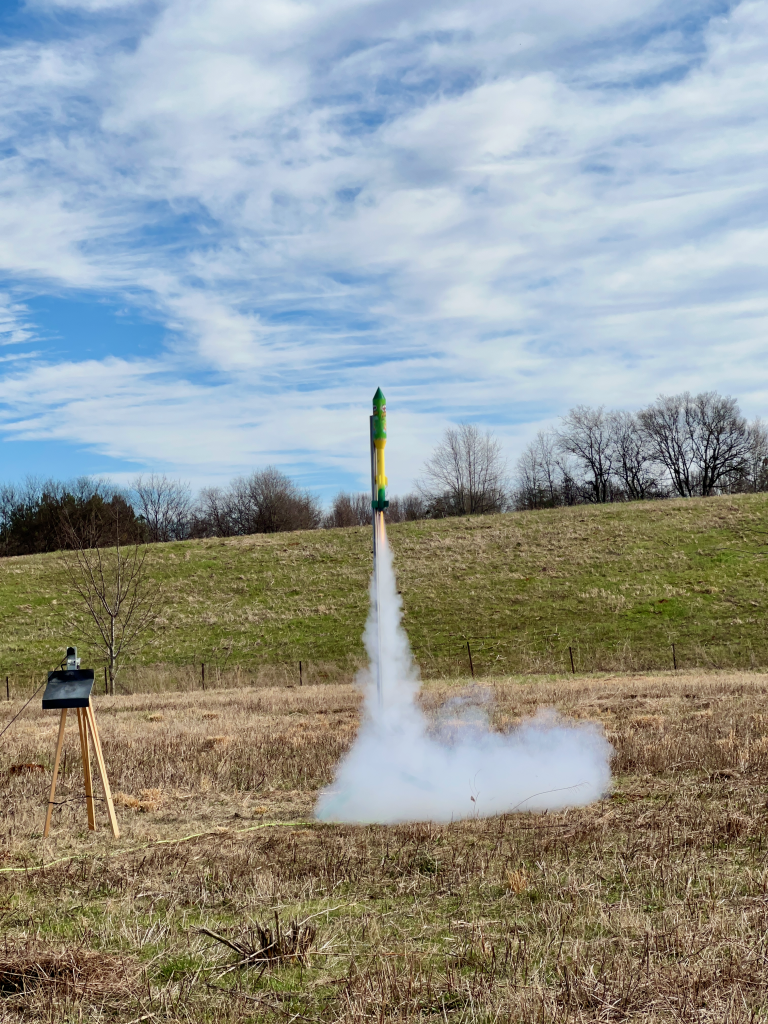
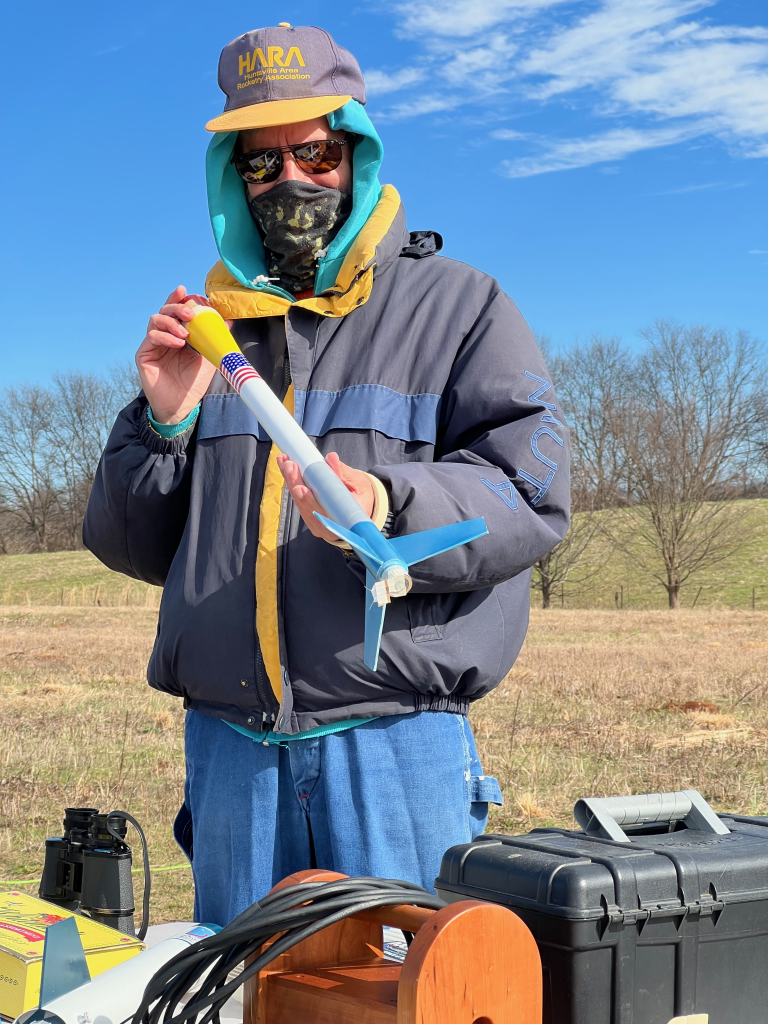

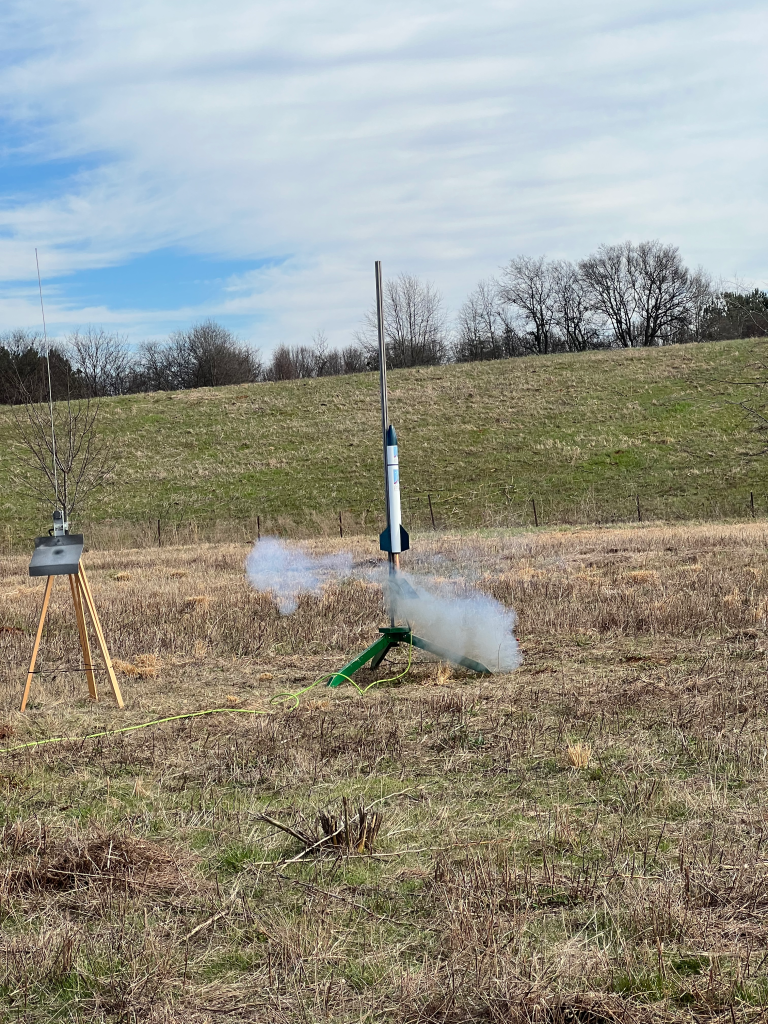
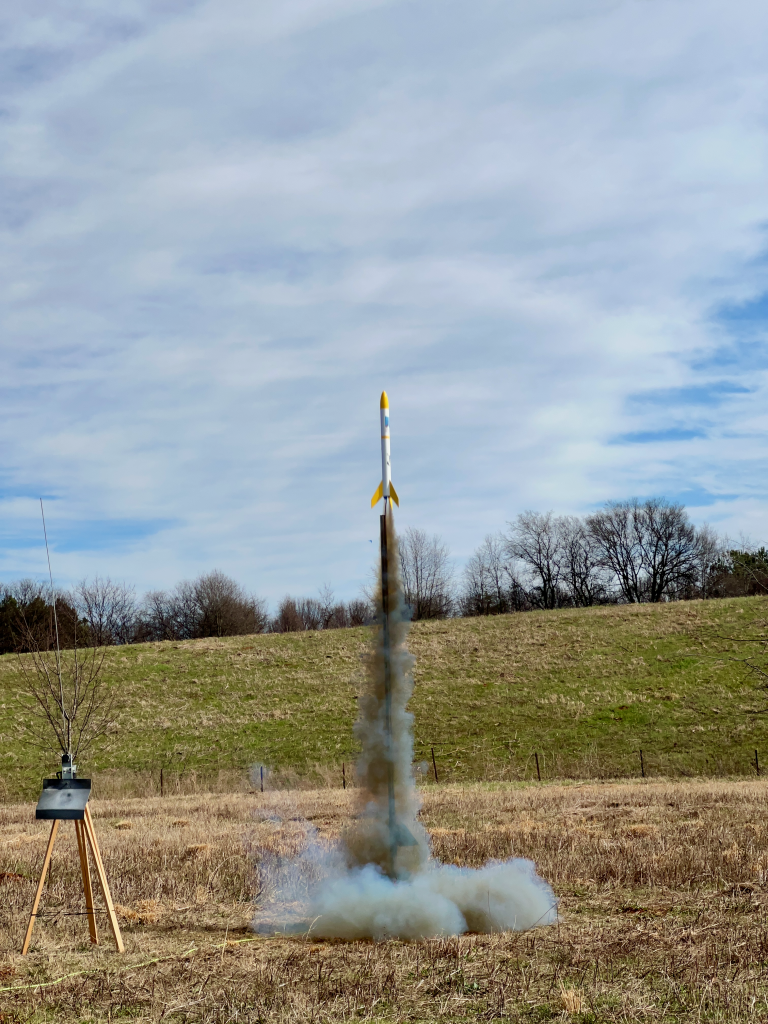
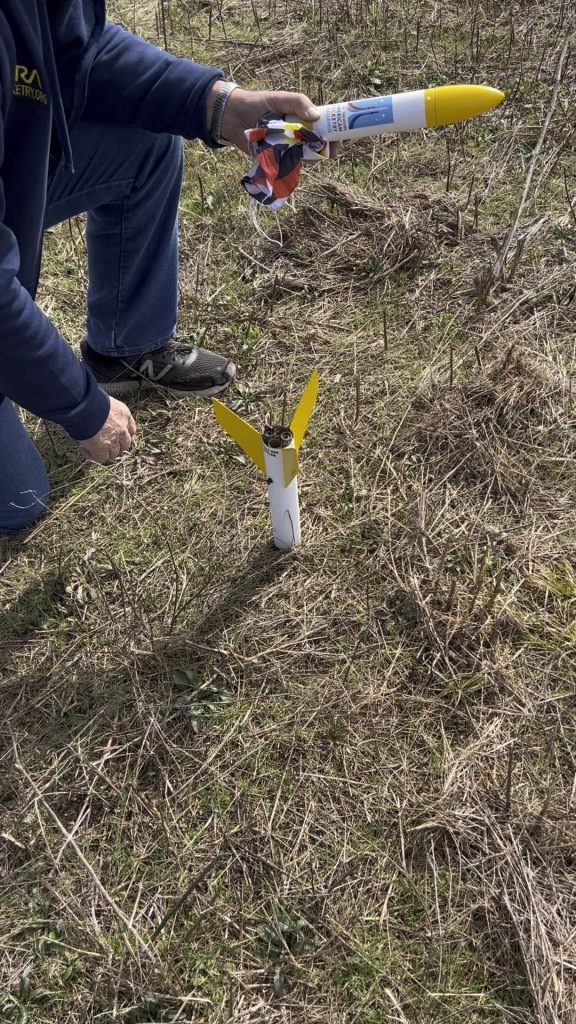
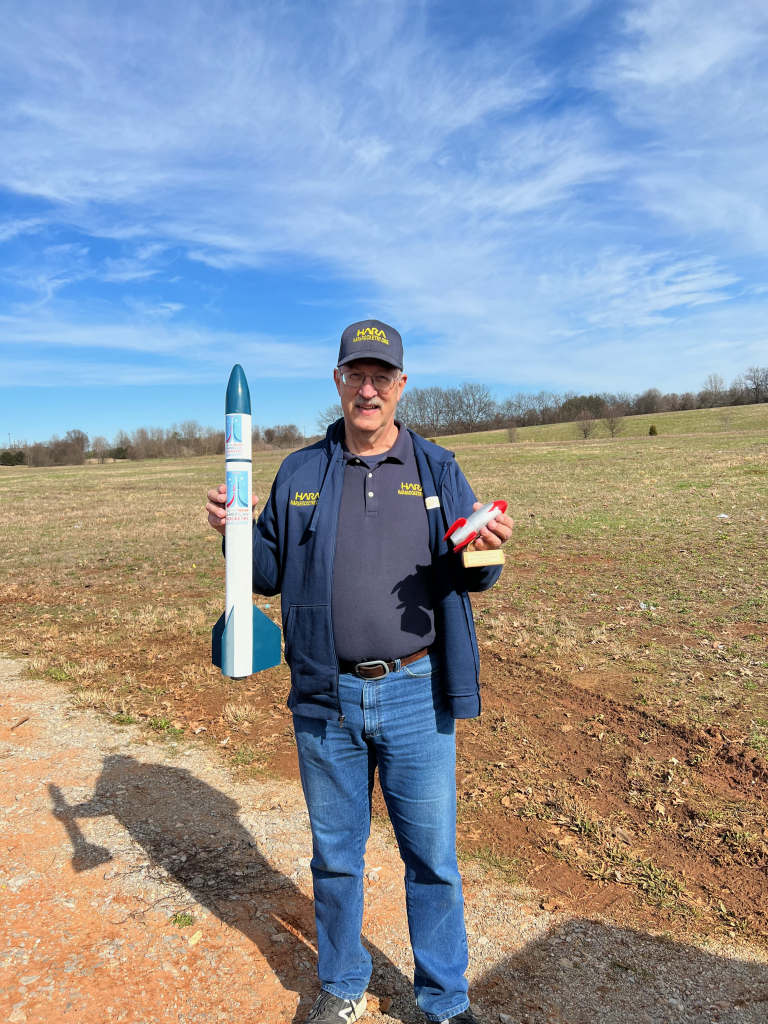
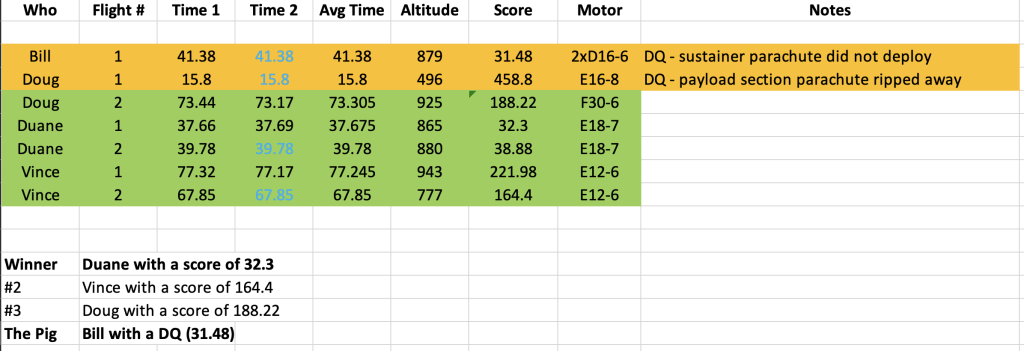

Great pictures…can’t wait till next years challenge.